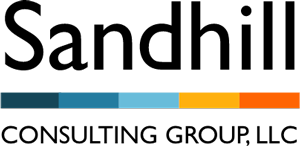As a former COO, overseeing Kaizen events, value-stream mapping analysis, upgrading ERP systems, and implementing customer success programs, I recall how easy it was for functional leaders to get bogged down in their own imperatives and lose sight of the big picture.
Individual silo objectives can inadvertently be at cross purposes with others – most commonly between sales and operations. To meet a revenue goal, sales teams may commit to deals that the operations team is unaware of or hasn’t bought into. Policies might be flexed to drive more short-term volume, making the rest of the company strain in meeting the increased demand. These knee-jerk reactions then ripple throughout the supply base causing consternation. Today’s companies are also multi-enterprise networks of multi-tier suppliers, distributors, warehouses, carriers, and other partners – which further contributes to the complexity of fractured people, systems, and processes.
In my case, our cross-functional interconnectedness was low because the technical infrastructure to do so didn’t exist. The technology in our silos was designed to optimize narrow functionality. Today it’s a different story.
End-to-End Supply Chain Software Enables COOs to Manage an Organization vs. Silos
Until recently, point solutions were the go-to tools for organizations. Because they optimized a given function in isolation, COOs were able to ensure teams had the tools they needed to succeed, but no way to monitor how their decisions and processes impacted those of other business units.
End-to-end connectedness with order lifecycle views is changing the game, helping executives break down silos between systems, people, and processes, enabling significant cultural and operational change that aligns functional success with the company vision. Here of some of the ways that yesterday’s wants have been answered by the latest unified IT platforms.
Interconnected objectives sharing and key results tracking
When objectives were set by top key executives, these priorities cascaded to the next level of executives, and down into the silos. But without cross-functional insight, there was no way to determine whether and how the success of each silo contributed to the main objectives. Organizations have tried to address this by shifting to matrix management and shared services, Hoshin charts, the Balanced Scorecard and OKRs (Objectives and Key Results) recently popularized within Google, which attempt to span across an organization, rather than individuals and teams, to create alignment. While it helps companies become more cross-connected, the approach is also manual and tedious. Across partners, objectives for delivering on-time and in-full can also be at cross purposes with keeping costs low, both from an inventory carrying perspective, as well as from a logistical perspective.

In one role I had, I was a supplier managing the reverse logistics and repairs of a global cellphone OEM – hundreds of thousands per month. However, they were unhappy with us, and we were unhappy with them – mainly because our corporate goals and objectives were different and unknown to each of us. We were each in our own “company silos.” Fortunately, my counterpart wanted to fix this as much as I did. We were able to couple each other’s company objectives and make them mutual. It was tough and manual, but it worked.
COOs are now using supply chain software that offers advanced analytics and KPI capabilities that interconnect and take the tedium out of common goal sharing and tracking, making a supplier seem like part of the customer.
Monitor events, sense risks and provide mitigation options while there’s time
Good news travels fast. Bad news travels slow. Why? No one wants to be the bearer of bad news, especially if the messenger gets shot.
Nevertheless, problems happen; manufacturing yields miss, customers change their orders mid-stream without adjusting delivery dates, and raw materials go on allocation. The problem is, whatever changes occur, their identification and resolution are passed along slowly and usually manually. It’s not a pleasant task to inform a customer their order will be late.
Today’s supply chain systems have gotten really good at identifying and sensing risk before they happen. They’re also able to signal throughout the supply chain what’s occurring, and what the upstream and downstream impacts are likely to be, giving the sub-tier time to adjust.
Like anyone else, I never wanted bad news, but I did want to hear it before it was too late to do anything about it. Supply chain visibility and control tower technology make it much easier to get that in check so you can meet your promises.
True sub-tier visibility up and down the supply chain
Some years ago, on my first trip to Shenzhen PRC, I was amazed at how fast China had set-up infrastructure to support the wave of manufacturing coming their way from America. Initially a labor arbitraging play, China quickly recognized how to build-up specialized supply bases by creating localized hub and spoke supply models around certain industries such as PC manufacturing. This eventual deep-tiering placed limitations on supplier commits and shipment readiness. Most enterprise IT platforms were proprietary; not open and unable to track n-tier supply chains. Fortunately, today, that has all changed, providing detailed insight into supply chain activity at every level, including inventory availability, logistics planning, shipments tracking, and dependencies downstream to the markets.
Linked sourcing and planning processes to operational execution
In another company where I was COO, we managed supply chains for several big tech companies. We had an enterprise ERP system to do this. Or so we thought.
Some of the core modules that came bundled with the ERP were weak for our purposes, so we bolted on a best-in-class point solution for inventory and warehouse management. The ERP also wasn’t very good at demand and supply management, so we licensed and installed an advanced planning system. It was a bit like putting together a jigsaw puzzle with multiple point solutions each needing to connect and integrate to one another, often through middleware to finally get the full picture.
Our results allowed us to manage hundreds of vendors for our clients and meet demanding service level agreements. But, to set it all up, not to mention the time and expense, was a major undertaking.
This no longer has to be the case. Some mature supply chain management systems have native and integrated capabilities across planning and execution already incorporated and connected in one platform. This offers tremendous savings in time and total cost of ownership.
Ability to gauge and mitigate the cost implications of disruption
With all the sensing and signaling built-in to today’s prevailing systems, the cost trade-offs of changes can be known before one pulls the trigger. The objective is finding that balance between time and cost. Good supply chain management aims to strike the balance of least cost routing against meeting delivery commits, and what to do if either one gets disrupted. Modern supply chain management solutions eliminate most of the guesswork. Smart business rules present the best solutions for just about any given situation, and ubiquitous connectivity enables fast and confident multi-party collaboration – so you can take immediate steps to resolve the issue and minimize impact.




